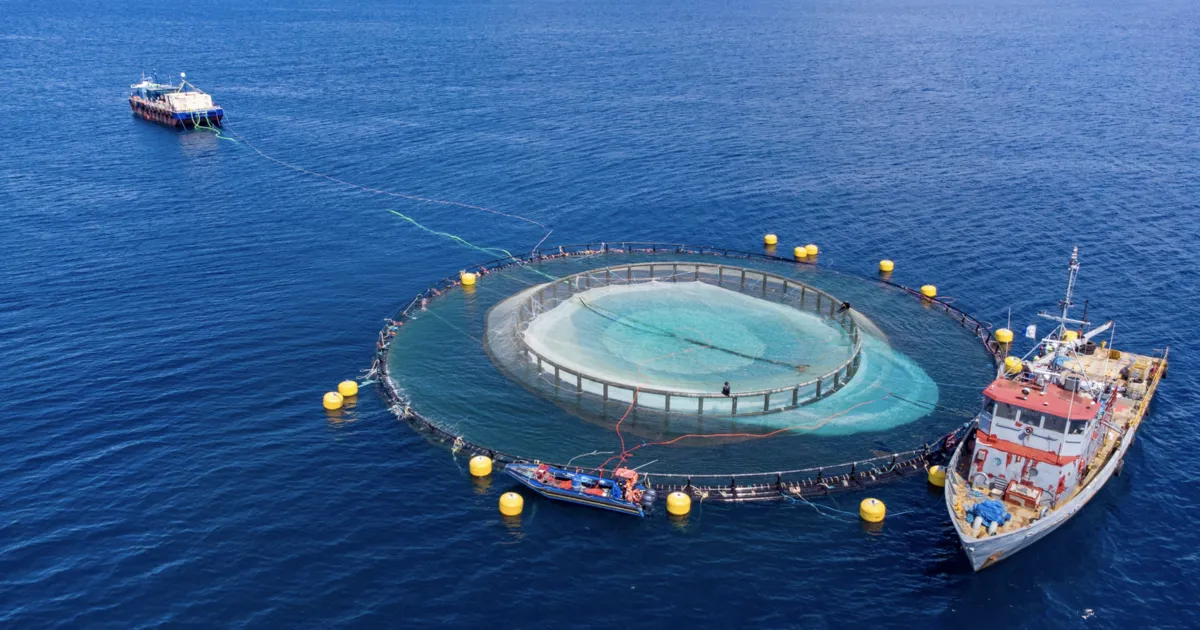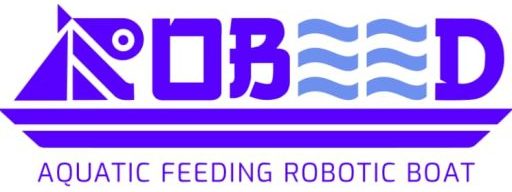
Energy Efficiency in Fish Feeding Boats:
Implementing energy-efficient technologies to reduce fuel consumption and minimize environmental impact.
Introduction
Aquaculture has grown dramatically in recent decades to help meet the rising global demand for seafood while taking pressure off overfished wild stocks. Fish farms now produce over half of all fish consumed by humans. However, the expansion of aquaculture has also increased environmental pressures if left unchecked. One key aspect is the energy usage and emissions from vessels servicing fish farms, especially feed boats that circulate daily distributing pellets.
As fisheries play a vital role economically and in global food security, sustainably intensifying production is crucial. This means decoupling growth from environmental impacts through innovative and efficient technologies. Adopting renewable energy sources can help future-proof these industries from fossil fuel dependence while lowering climate and ocean acidification risks to coastal ecosystems integral to fish farming. Transitioning fleets like feed boats sets an exemplary precedent enabling further sustainable development.
Academic studies indicate aquaculture’s sizable and rising carbon footprint approaching 6% of the entire global food system’s emissions. Much stems from fuel use in fishing and servicing operations. Meanwhile, international efforts like the Paris Agreement demand significant decarbonization across industries. Energy efficiency upgrades and renewable integration represent large untapped opportunities to help fisheries align with these commitments cost-effectively.
Leading the way, Norway already electrifies portions of fish farm infrastructures from abundant hydropower. Still, onsite renewable pilots show promise in offsetting diesel consumption vessel-wide. This research explores technical and policy options realizing that potential by exploring efficiency upgrades and marine renewable technologies suited for feed boats and their unique duties of providing continuous nourishment. A transition respects aquaculture’s critical contributions while safeguarding environmental health and climate stability upon which blue growth ultimately depends.
Energy Use on Fish Feeding Boats
Feed boats burn fuel continuously over long operating seasons, as many farms stock fish year-round. Vessels make multiple rounds each day to service all production net pens or fish cages stationed up to 10-20 kilometers apart. Motors must run perpetually to navigate between sites against currents and winds, with additional power needed for auxiliary equipment handling and distributing tonnes of feed pellets smoothly. Between travel, loading/offloading cargo, and maneuvering in tight spaces, diesel engines frequently run at part-throttle where efficiency drops sharply.
Not only is excess combustion wasteful from an environmental perspective, but volatile fuel prices introduce financial uncertainty for farm operations reliant on consistent stock-feeding schedules. Any increases disproportionately drive up production costs given the quantities of diesel required annually fleet-wide. Spills during refueling also pose contamination risks, as even minor leaks of hydrocarbon fuel oils can seriously impact fragile coastal and marine ecosystems that aquaculture farms inhabit. Proper spill containment and response is a regulatory focus but incidents still occur from aged infrastructure or human error.
As the aquaculture industry expands globally to meet rising seafood demand, associated energy footprint and pollution from conventionally-powered feed boats will grow proportionately if left unchecked. Sustainable intensification of aquaculture therefore demands prioritizing energy efficiency and transitioning to cleaner energy sources Industry-wide to minimize growing pressures on surrounding environments these farms depend upon.
Efficiency Options for Propulsion and Onboard Power
While upfront capital costs of efficiency retrofits or new buildings present initial barriers, the payback period for owners is often measured in months thanks to dramatic fuel cost reductions. Government incentives are encouraging more widespread adoption. For example, replacing an older diesel engine with an advanced 4-stroke outboard can boost engine efficiency from 25% to over 40%, yielding 25-30% lower fuel bills annually. Likewise, transitioning main propulsion and generator sets to hybrid-electric drives optimized for typical duty cycles slashes fuel use by 40-60% or more. When docked or idling, the vessel relies solely on battery power rather than burning diesel unnecessarily.
Additional payoffs include lower maintenance and part replacement needs from reduced run hours on efficiency-enhanced prime movers. These systems also improve working conditions and crew productivity by generating less heat, fumes, and noise pollution than aging diesels onboard for 24 hours each day. Over 10-20-year lifetimes, efficiency retrofits more than repay installation costs while keeping operations profitable through volatile fuel price periods.
Standardizing advanced designs across fish feeder fleets will have disproportionately large environmental benefits considering each boat services hundreds of hectares of ocean farms over decades of operation. With shared savings, providers could invest further in renewable energy integration and truly transition the global fish farming industry onto a sustainable energy path.
Renewable Energy Integration
Harnessing renewable ocean energy directly at aquaculture sites presents synergistic possibilities. Tidal stream generators and wave energy converters positioned among cluster net pens leverage ocean flows without occupying additional coastal leasing areas. Energy capture devices installed along subsea feed distribution lines provide electricity nearby where it’s needed. On-boat micro-hydro turbines generate power from water pumped for aeration systems while also extracting energy from prop wash. Mini offshore wind turbines atop supportive feed distribution barges harvest powerful wind resources sweeping open waters.
Combining these distributed marine renewable technologies with solar and battery storage allows integrated microgrids to efficiently serve multisite fish farms. Augmenting vessels like feed boats becomes more practical with streamlined connection points. Individually small devices collectively provide round-the-clock power exceeding the requirements of electrically-optimized fleets. Inter-array cabling consolidates energy along undersea backbones for delivery to shoreside macros grids, diversifying coastal community energy supplies.
Pilot farms demonstrate the reliability of renewable hybrid systems even in the most energetically productive regions. Remote monitoring aids operations and maintenance planning from any location. Moving forward, optimizing device placement, array sizes, and microgrid configurations tailored to specific environments will maximize renewable energy harvest and placement. Advanced analytical tools likewise help constantly refine system efficiencies at minimal additional cost.
Regulatory and Market Drivers
Stricter fuel efficiency and emissions regulations for commercial marine fleets are incentivizing improvements. The International Maritime Organization continuously lowers caps on sulfur content in marine fuel oils and mandates periodic design/reporting upgrades. At regional levels, the European Union incorporated shipping into its emissions trading scheme while several U.S. states introduced low-carbon fuel standards. For aquaculture specifically, acknowledgment programs like the ASC’s Carbon Intensity Indicator encourage renewable integration.
Certifying vessels demonstrate quantitative efficiency gains, qualifying for tax breaks or priority access to ports. Insurers also provide discounts for “green fleets” reducing environmental liabilities. Progress in ecolabeling cultured seafood amplifies such market transformations. As evaluated sustainability standards penetrate major retail chains and dining establishments, brands will prefer sourcing from low-carbon certified farms and partner services like renewable-powered feed boats.
Younger consumers increasingly prioritize climate-friendly choices, representing future market growth. Major seafood importers commit to carbon-neutral supply chains by prescribed deadlines, obliging foreign suppliers to modernize vessel fleets sooner. International financing institutions hence channel funding toward clean technology demonstration projects to facilitate scale-up across developing aquaculture economies. Collaboration between environmental non-profits, tech innovators, and progressive industry groups further accelerates the adoption of renewable energy solutions fulfilling both regulatory compliance and consumer-driven sustainability demands.
Conclusion
The opportunities examined demonstrate how aquaculture industries can drastically trim CO2 emissions cost-effectively through efficiency upgrades and renewable integration customized for operations. Transitioning fish feed boats as a bellwether shows pathways available across global fisheries to decarbonize responsibly aligned with climate targets.
Coordinated multi-stakeholder initiatives must drive these transitions. Strategic government incentives and clear emissions regulations should catalyze industry-led innovation. Aquaculture associations collaborating with climate agencies can prioritize demonstration projects validating technologies. United action through public-private partnerships efficiently raises capital towards pre-commercialization.
Internationally agreed standards for energy-efficient and low-carbon certified aquaculture can reward early investors while safeguarding oceans’ health integral to blue growth. Consumer-facing sustainability certifications and traceability programs strengthen market pull for responsibly sourced seafood, closing demand-driven loops. Financing institutions sharing risk enables solutions scaling in developing economies reliant on fisheries.
As a critical policy lever, including commercial maritime under national climate and renewable strategies fosters consistent policymaking certain to attract investors. Regional cooperation streamlines support programs avoiding inefficiencies. International forums accelerate knowledge-sharing on emerging innovations, operational optimizations, and lessons learned across geographies and vessel applications.
If tackled collaboratively utilizing technology, regulation, and market forces, energy transition holds vast untapped potential lowering aquaculture’s climate footprint cost-effectively. Sustainably intensified seafood production preserves fisheries’ vital role feeding billions while protecting oceans’ welfare imperiled by the climate emergency. Transitioning fish feed boats exemplifies win-win pathways available across the blue economy aligning sustainability with economic imperative.

